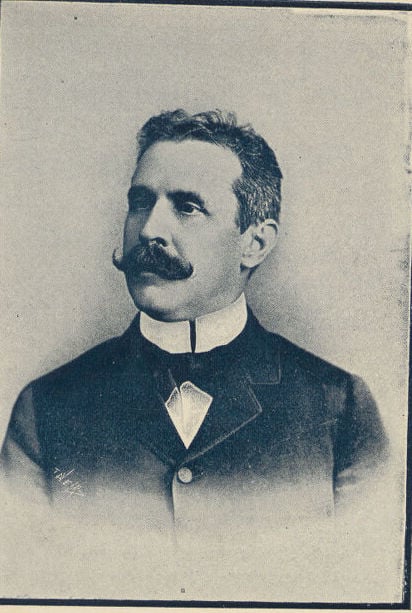translated from the Spanish by Edgar Peguero y Heredia
Tell me upon seeing the sweet rays
Of the splendid morning
The majestic flag
Of the stars and stripes?
Yesterday upon death he prayed,
Ostentatious deeds
On the solid bastion.
In the middle of the battle ...
Between the roaring horizon
Of the bombs and the bullets
Walled off is the night upright,
Its stars and stripes!
Oh tell me if you still,
Our starry flag,
Cover the roof of the brave,
Cover the soil of the homeland!
What is it that I glimpse
There on the distant shore,
And that shines upon the fog
On the steep tower
Where yesterday the enemy,
The soldiers denied?
With imposing silence
What preludes the battle
The breeze already reveals,
Already hides it from sight …
There the dawn finally lights up
Its stars and stripes.
Thus shines forever
That venerable flag
On the roof of the brave,
On the soil of the homeland.
La bandera americana
Dime si ves al dulce rayo
De la espléndida mañana
La bandera majestuosa
¿De las estrellas y franjas?
Ayer al morir él oró,
Ostenta’base gallardo
Sobre el sólido baluarte
En medio de la batalla …
Entre el horrísono estruendo
De las bombas y las balas
Aún miró la noche erguidas
¡Sus estrellas y sus franjas!
Oh, dime si todavía
¡Nuestra bandera estrellada
Cubre el techo de los bravos,
Cubre el suelo de la patria!
¿Qué es aquello que vislumbro
Allá en la orilla lejana,
Y que brilla, entre la niebla
Sobre la torre empinada
Donde ayer el enemigo
Los soldados congregaban?
Con el silencio imponente
Qué preludia la batalla
La brisa ya lo descubre,
Ya lo oculta a la mirada …
Allá la aurora al fin alumbra
Sus estrellas y franjas.
Así brilla para siempre
Esa enseña veneranda
Sobre el techo de los bravos,
Sobre el suelo de la patria.
This poem is in the public domain. Published in Poem-a-Day on September 15, 2024, by the Academy of American Poets.
In his 1960 essay, “Parnassianism, Symbolism, Decadentism-and Spanish-American Modernism,” literary scholar Poe Carden noted, “The Modernist Movement in Spanish American literature, which had its formal beginnings in 1888 with the publication of [Rubén] Darío’s Azul, was powerfully indebted to each of the schools that developed in France between 1860 and 1885; namely, Parnassianism, Decadentism, and Symbolism—owing most perhaps to Decadentism.” As defined, decadentism emerged from the writings of Montesquieu, the Enlightenment thinker who saw moral decay as a partial cause to the decline of the Roman Empire. According to Carden, Nicolás Heredia y Mota criticized the “moral collapse” of Decadentism in Spanish literature. He wrote, “[Heredia attempted] to investigate the sociological background of Decadentism; after asserting that the very name indicated it to be a school without ideals, and therefore characteristic of worn-out souls and a society in the dotage […].”

